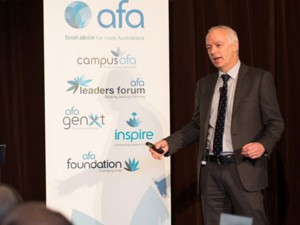It is widely known that digital information is accessed differently depending on the device/s being used; computers, tablets or smartphones. This next series of articles from The Beddoes Institute co-founder, Dr Rebecca Sheils, discusses the key findings from the Association of Financial Advisers’ ‘Connected Convenience’ white paper sponsored by Zurich. This white paper extends the ‘Connecting with Clients’ research by exploring how financial advice clients use mobile devices to access information and the implications for how financial advice practices communicate with their clients via digital communication channels now and in the future.
In 2015, the AFA and Zurich partnered with The Beddoes Institute to survey clients of financial advisers. The study polled 779 clients of financial advisers to understand their use of mobile devices, services, content and applications and the reason for their choices.
Figure 1 shows the percentage of Gen Y, Gen X and Baby Boomer advice clients that own smartphones and tablets (overall and among high net-worth individuals) compared to general population ownership rates. Interestingly, the study found that ownership of mobile devices is higher among financial advice clients than the general population, and Baby Boomer advice clients are using mobile devices more commonly than non-advised members of the public.
Despite the fact that financial advice clients are typically ‘older’, more than three quarters (77%) own a smart phone and more than half (56%) own a tablet. Furthermore, ownership of smart phones and tablets is considerably higher among financial advice clients compared to the general population Australian mobile device ownership and home usage report 2014 (65% smartphone ownership and 37% tablet ownership among Australia consumers).
Consistent with trends across the Australian population, tablet and smartphone ownership decreases as age increases among financial advisers’ clients. Younger client generations adopt mobile devices earlier, with nearly all (99%) Generation Y clients currently owning smartphones and just over half (55%) owning tablets. Interestingly, while smartphone ownership is significantly lower among Baby Boomer clients (68%) than other generations, tablet ownership is almost on par with Generation Y and not far behind Generation X (53% ownership vs 55% and 65% respectively).
Notably, mobile devices, and especially tablets, are more likely to be owned and used by high net-worth individuals. For example, while 53% of Baby Boomer clients own a tablet, this number jumps to 62% among high net-worth Baby Boomers. This trend is also evident among high net-worth Generation X and Y clients with 75% of these clients owning a tablet versus 65% and 55% respectively.

Implications for advisers
What this demonstrates is that financial advice clients are even more predisposed to accessing mobile technology than the unadvised population. This means that, today, financial advisers that have not considered a mobile strategy are not just disadvantaged but are ignoring a shift in client and consumer behaviour that will have significant long term implications.
In financial advice, the importance of the adviser-client relationship is well documented, but the nature of those relationships is changing as consumer behaviour continues to evolve. The high incidence of mobile device ownership among advice clients provides a compelling business case for greater investment in mobile technology to enhance the financial advice experience for Australian consumers.

Dr Rebecca Sheils is Director and co-founder of The Beddoes Institute, which specialises in delivering research, benchmarking and evidence-based consulting services to the financial services sector. In her role, she is responsible for industry thought leadership initiatives and for managing The Beddoes Institute’s Most Trusted Advisers Network (mosttrustedadvisers.com).
The AFA white paper – ‘Connected Convenience’ extends the ‘Connecting with Clients’ research by exploring how financial advice clients use mobile devices such as tablets and smart phones to access information and the implications for how financial advice practices communicate with their clients via digital communication channels now and in the future.

















